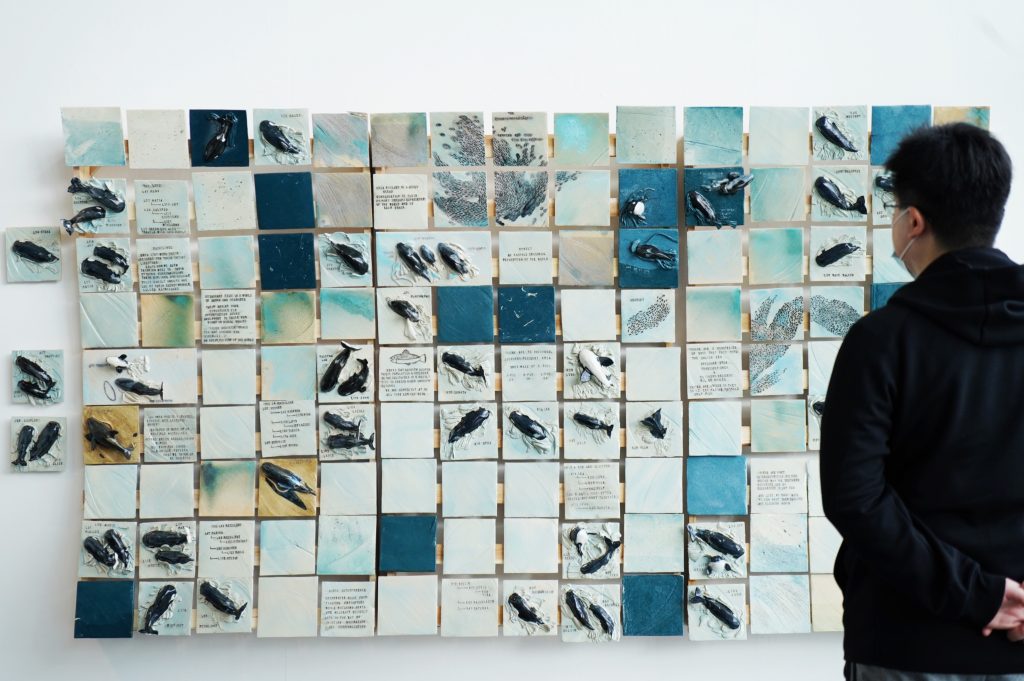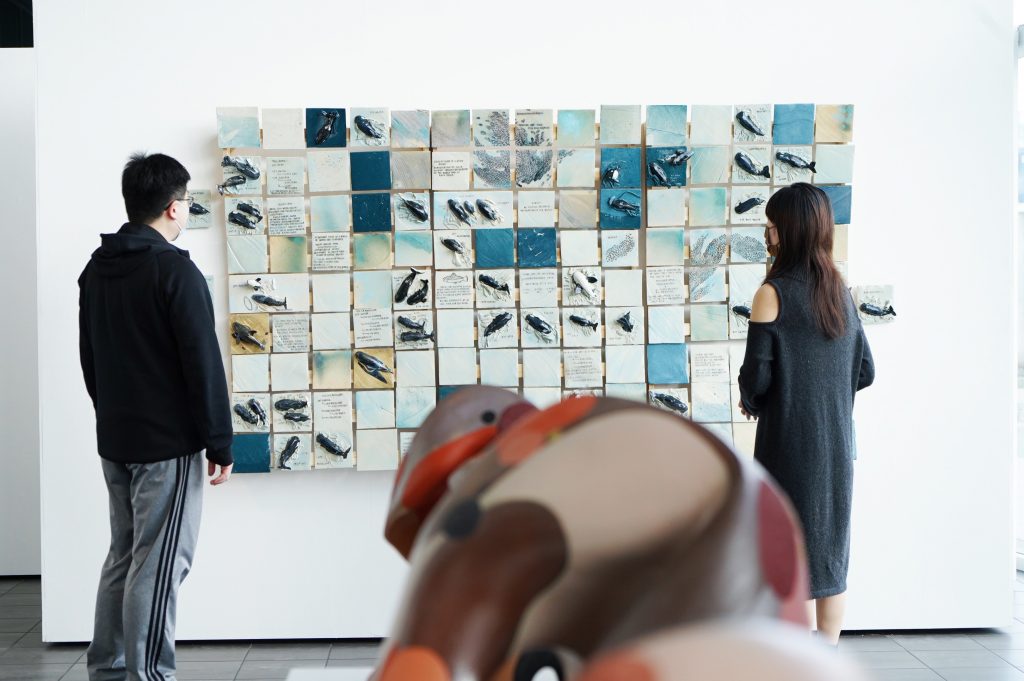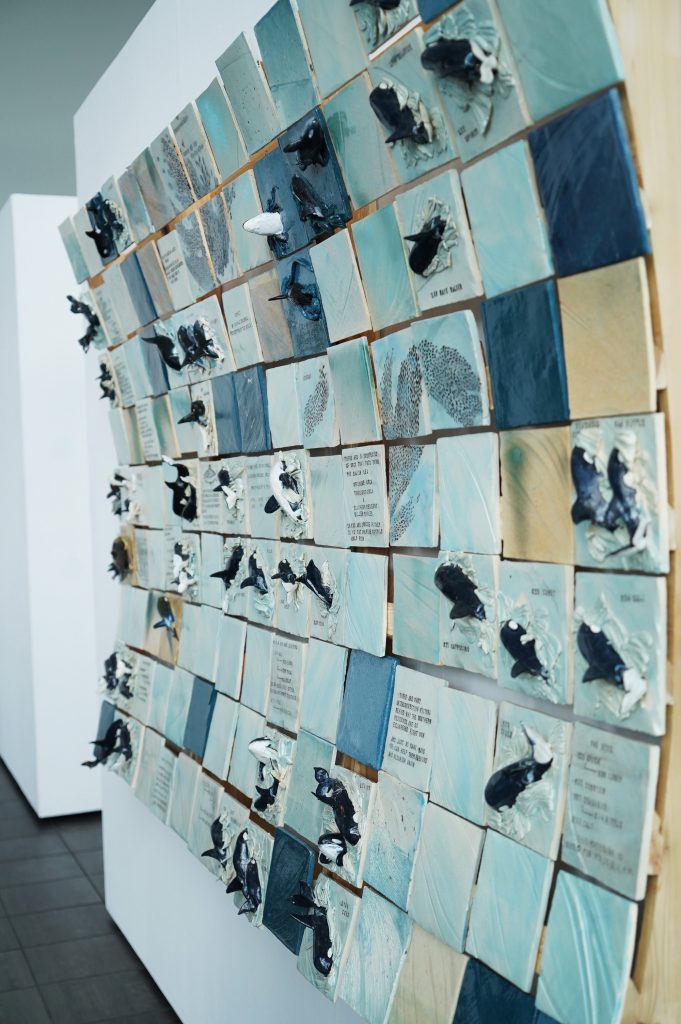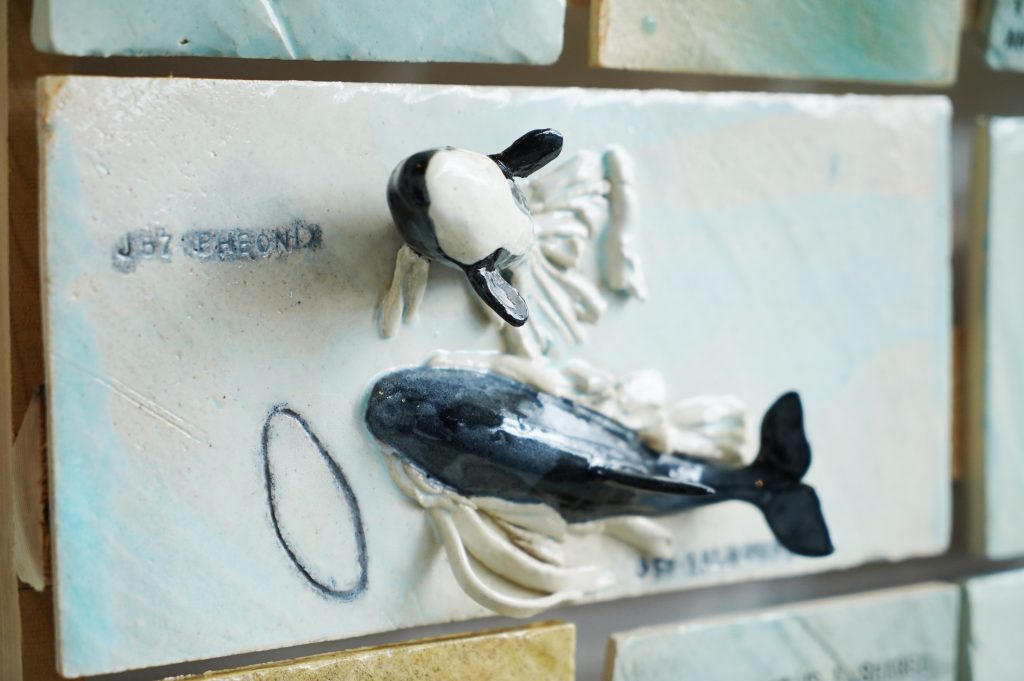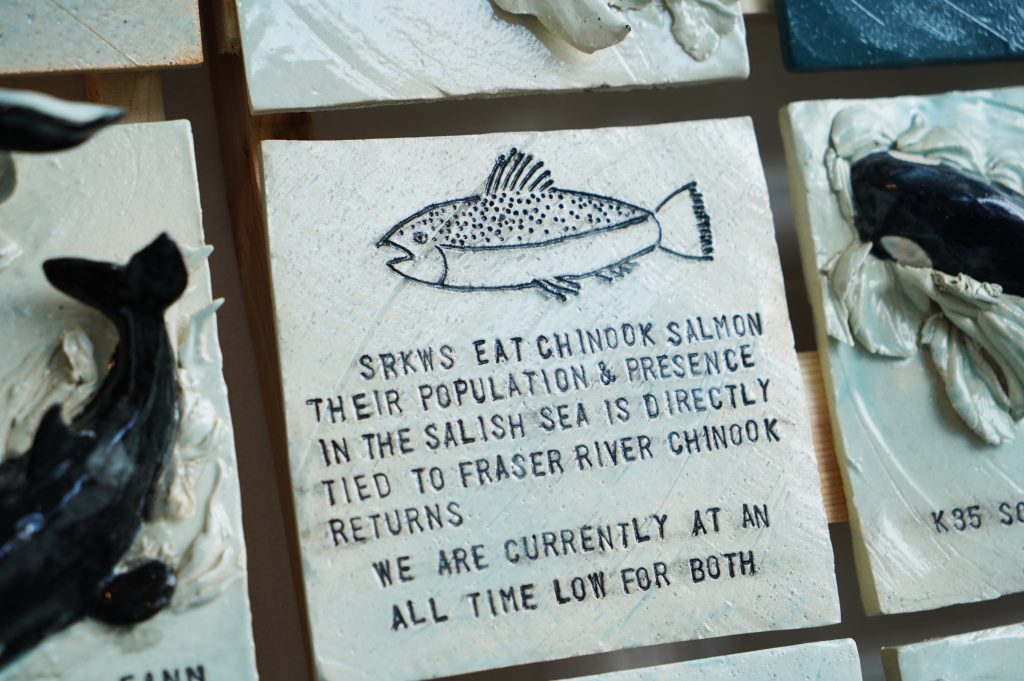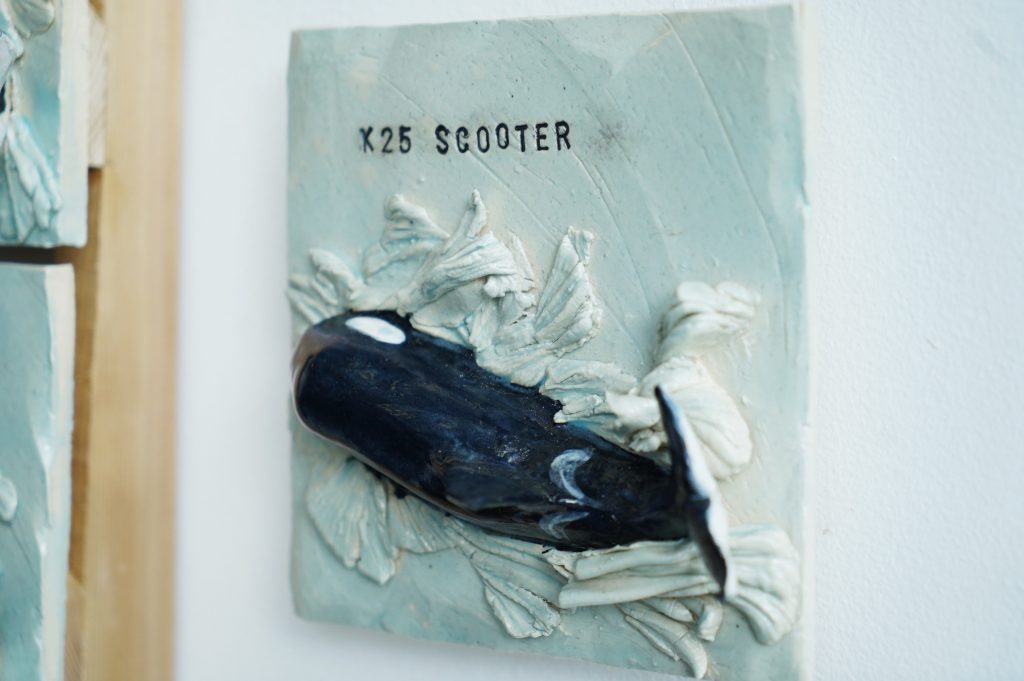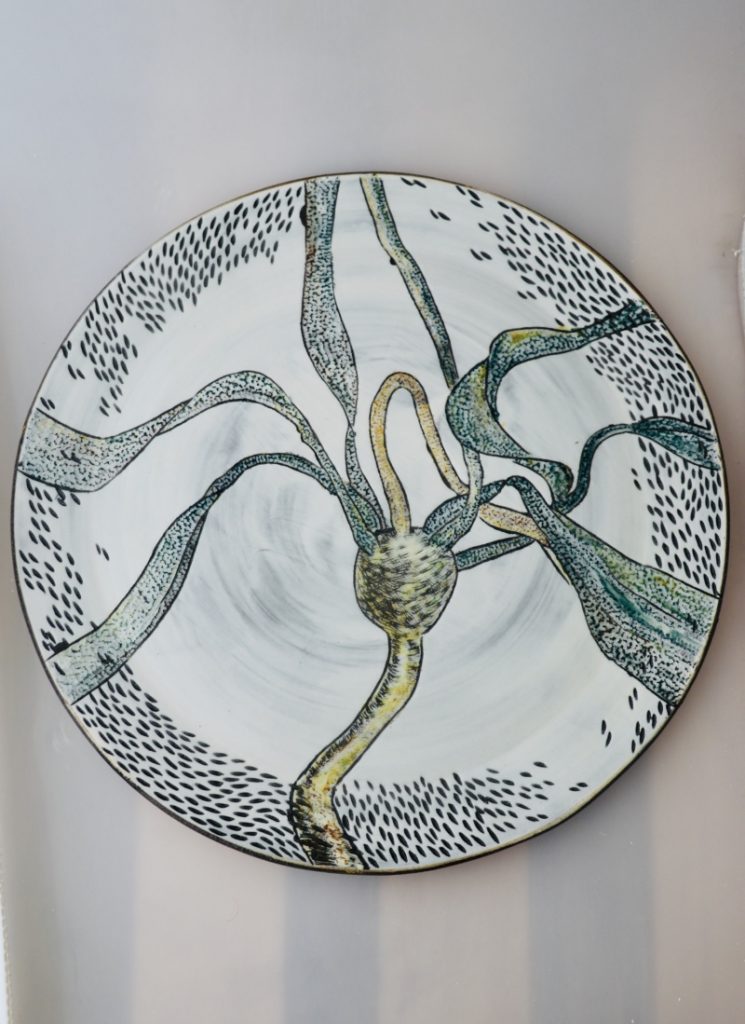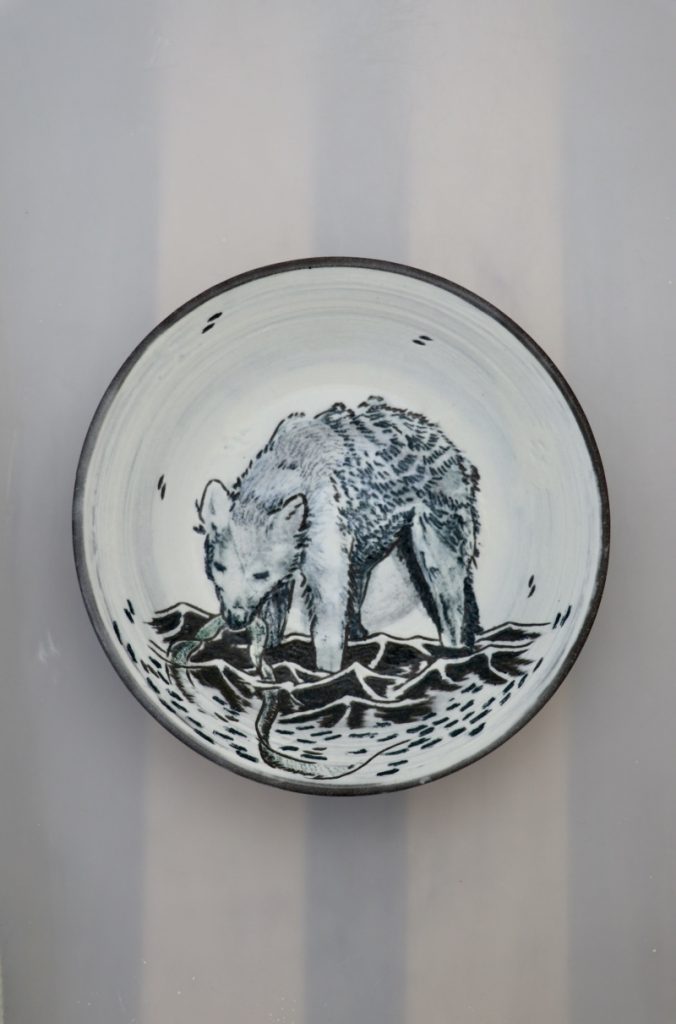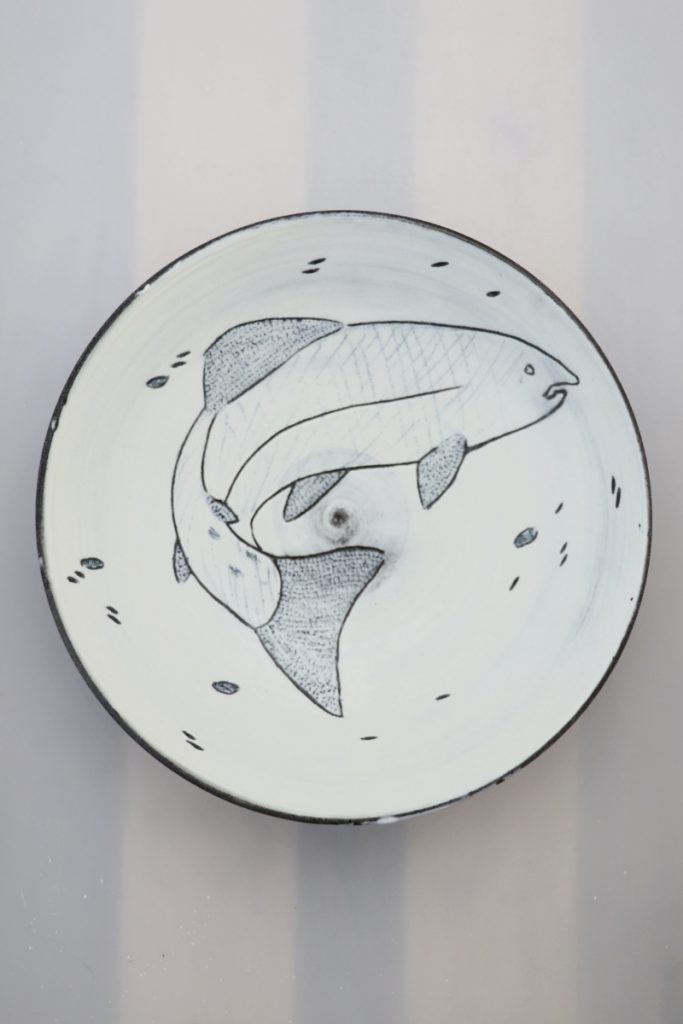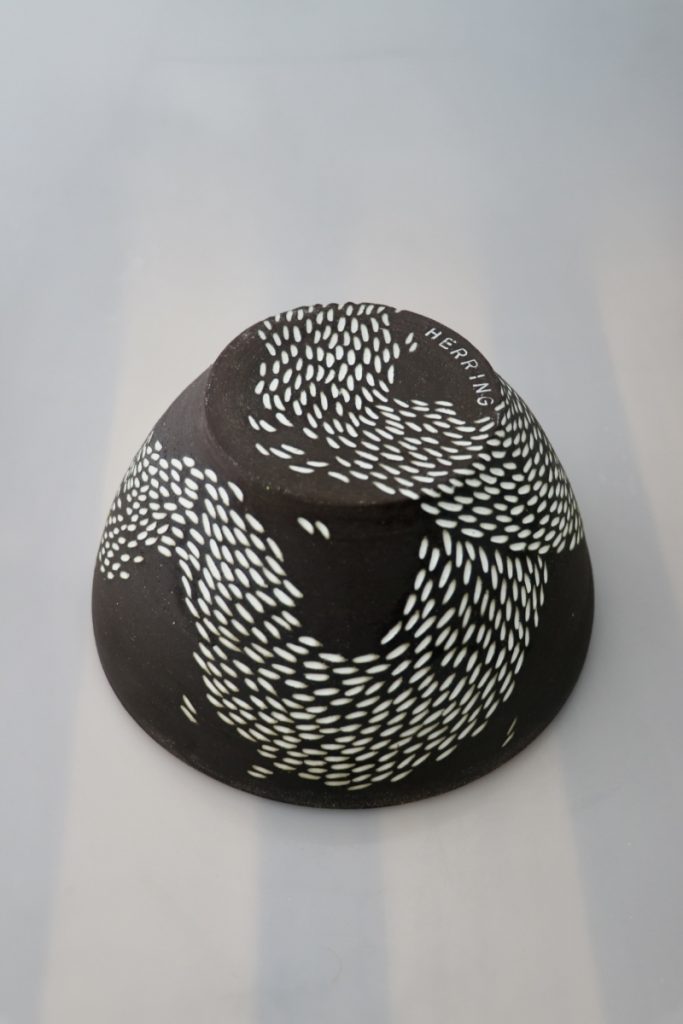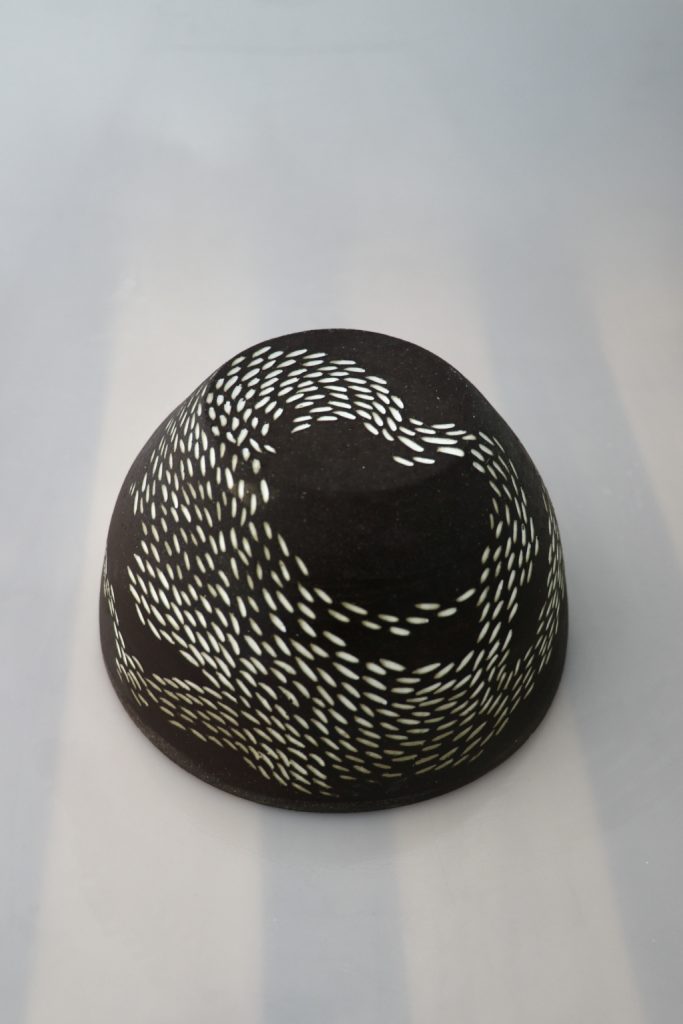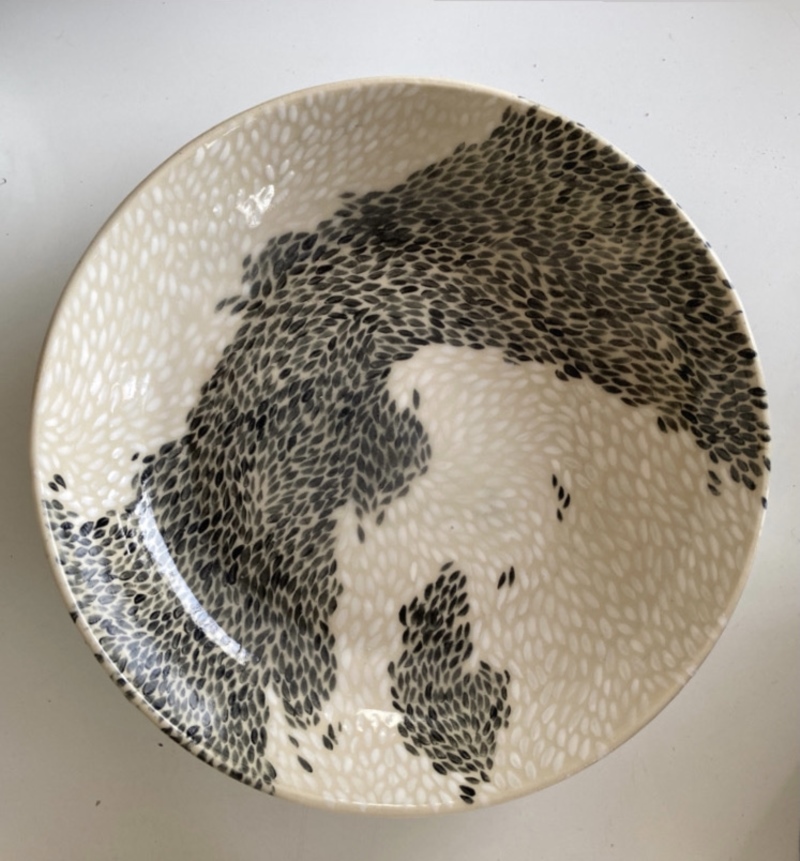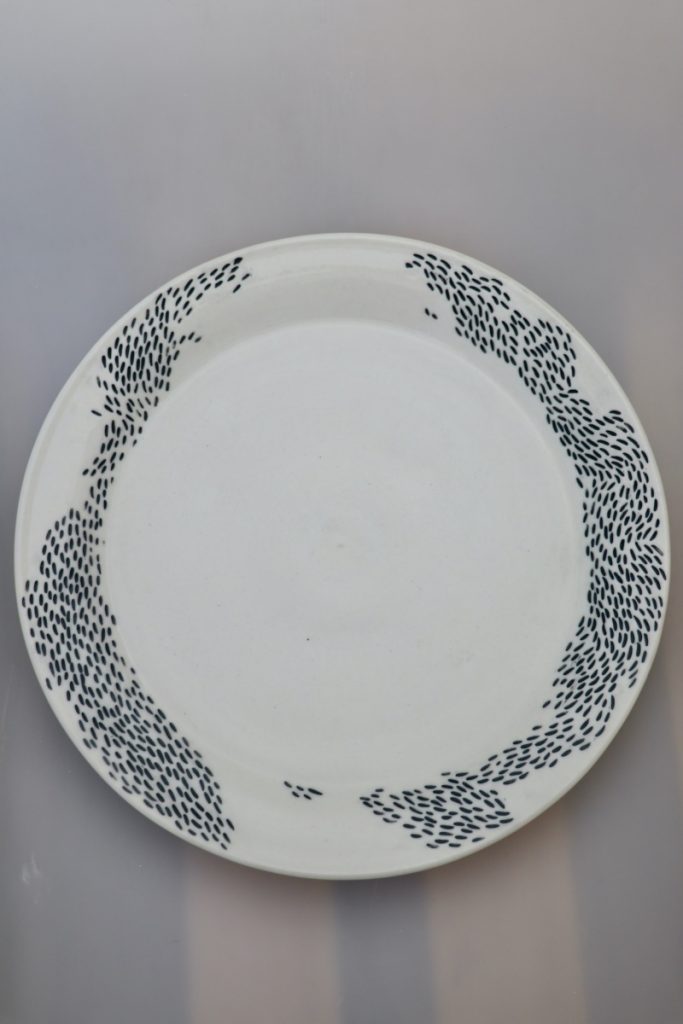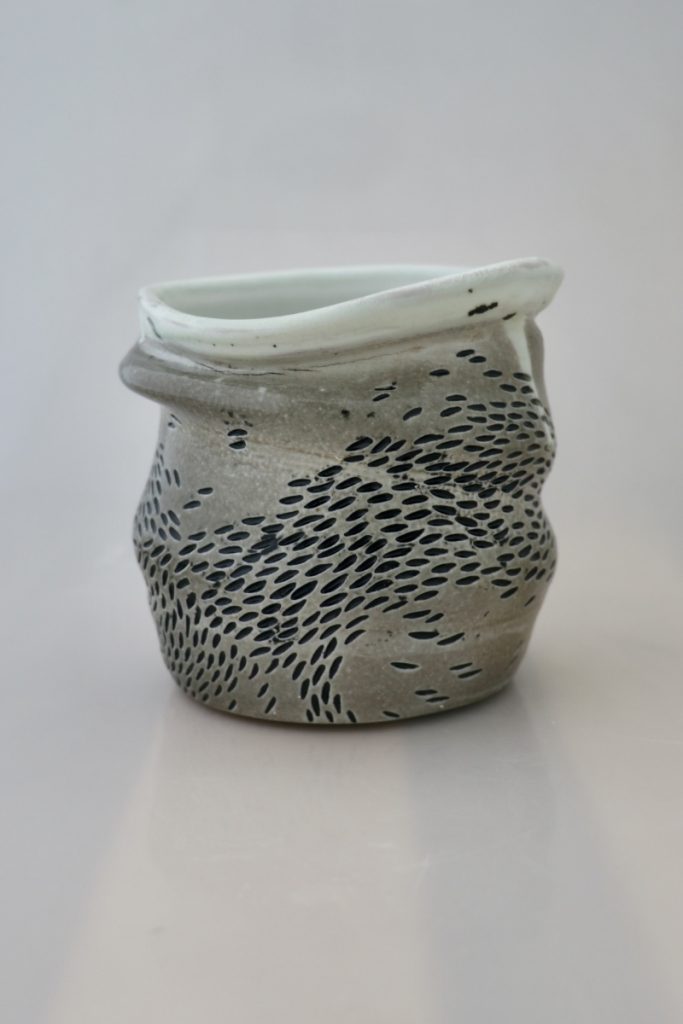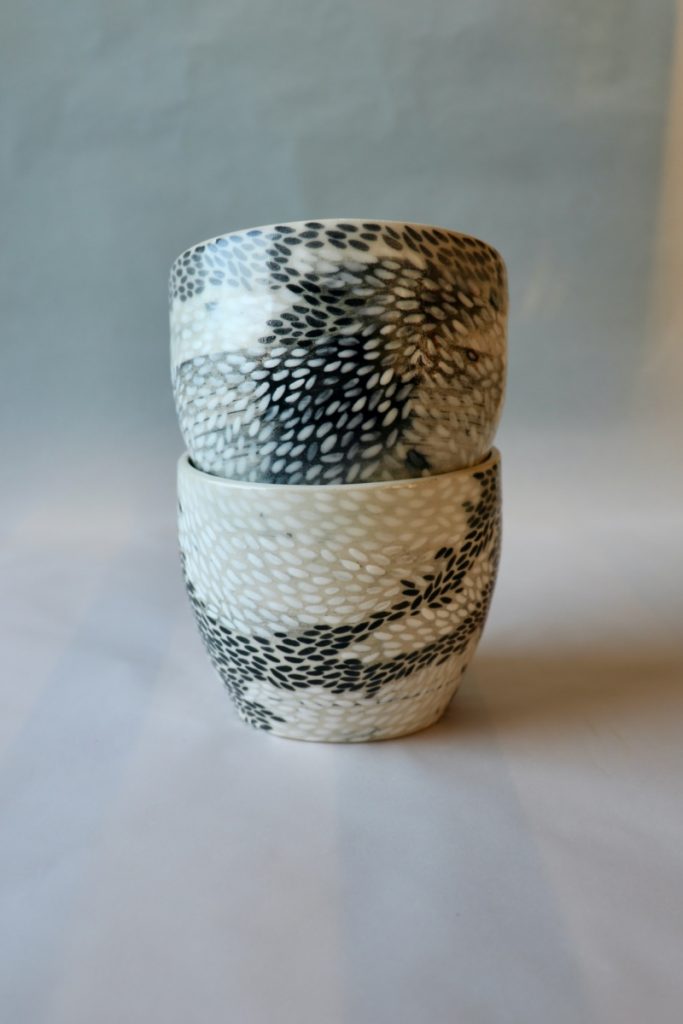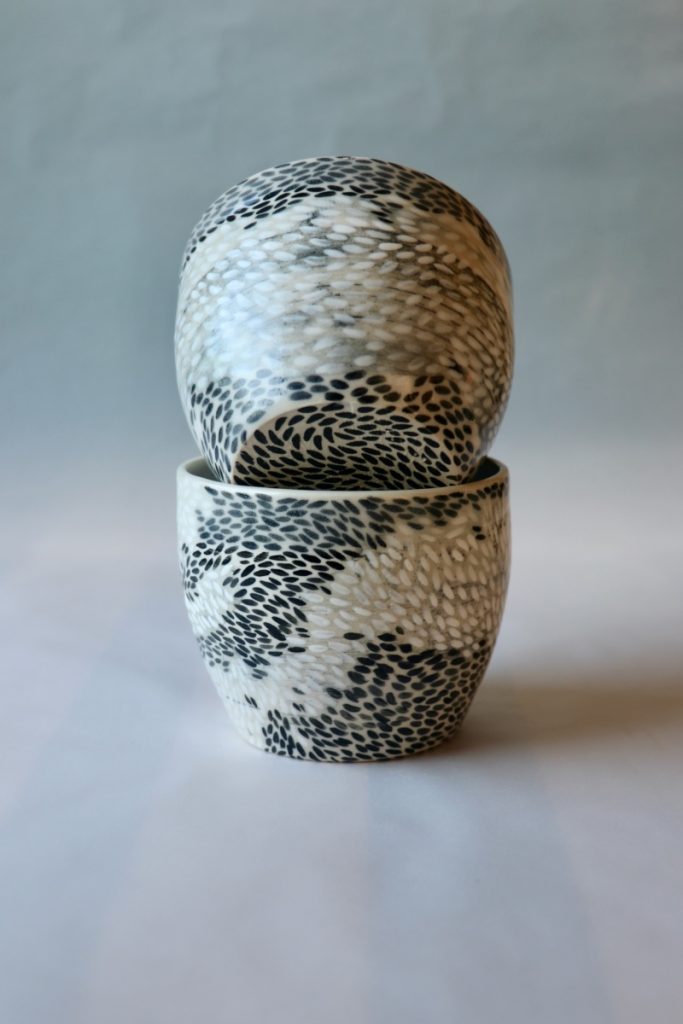Clare Wilkening’s work is focused around ecologies, human and non-human, and the major and subtle linkages therein. They utilize ceramic forms to evoke, narrate, and to respond to specific places and ecological issues.
Clare Wilkening is a ceramicist who currently studies at Emily Carr University of Arts and Design. She was born and raised as a settler on Xʷməθkʷəy̓əm (Musqueam), Sḵwx̱wú7mesh (Squamish), and Tsleil-Waututh territories, which not only gave her a sense of responsibility to support these nations but also very much impacted her creative process. She chose ceramic art as her primary material because she believes ceramic is a very special material that could connect to the ground and brings inherent power and meaning. She believes the bridge between her work’s topic, object, and substrate of our existence could be made through ceramic art.
Her work was mostly inspired by the broad love for nature, focused on ecologies, human and non-human, and their connections. She recognizes land and water as important actants ongoing dialogue within her work. Much of her work parallels and expands upon the knowledge she gained through her studies in Environmental Science. She chose to engage with ecology as an artist because of the evocative and responsive way of generating her work, which as a scientist she could not have done.
“The impulses and ideas for my work begin with a broad love for the natural world. Mainly my interests are focused around ecologies, human and non-human, and the major and subtle linkages therein. I relish the experiences I have had within the felt world of ecology, and I try to bring forth that spirit of creative intuition, play and levity in my working processes.
Much of my artwork parallels and expands upon my BSc in Environmental Science and the information and knowledge I gained during that time. By choosing to engage with ecology as an artist instead of as a scientist, I am able to research the many topics that hold my attention and to generate work that is evocative and responsive.
In my work, I wish to challenge the gesture of sustainability beyond its current cultural logic: a means to maintain resource levels for future extraction at best, and as a buzzword at worst. I would like to shift environmental thinking from the language of sustainability and efficiency towards engagement in reciprocal and regenerative care. Much of the thinking and practice in this type of epistemology has been done by Indigenous scholars and artists, and I have been fortunate enough to have this decolonial discourse play a heavy role in my education. My positionality as a settler making art within which land and water are actants is an ongoing dialogue within my work.
I choose to work primarily in ceramics because of the material’s direct connection to the ground, which has inherent power and meaning. I uncover that by choosing a material that can be a bridge between the topic of my work, the object that is the work, and the substrate of our existence. We are all subjects of the ground, and the ground is subjected to all of us.”
– Clare Wilkening, 2020
克莱尔·威尔肯宁 (Clare Wilkening) 是现就读于艾米丽·卡尔艺术与设计大学 (Emily Carr University) 的陶瓷艺术家。她加拿大卑诗省的玛斯昆族和斯阔米什特莱尔·沃特斯出生和长大, 这不仅赋予了她支持这些族裔的责任感也极大地影响了她的艺术创作。她之所以选择陶瓷作为主要材料是因为她相信陶瓷是一种可以连接土地并带来很多内在的力量与意义的特殊材料。她认为陶瓷可以在她的作品主题、对象和生存基础之间架起一座桥梁。
她的作品主要来自她对自然界的广泛热爱和从中受到的启发,围绕着生态、人类与非人类以及它们之间的联系。她认为大地和水是她作品中重要对话的参与者。她大部分的作品都运用到了她在环境科学学士学位课程中所学到的知识,并在此基础上延伸。她之所以选择从艺术家的角度从事生态学,是因为她认为艺术令人回味和直觉的快速反应的创作方式是她科学家时无法做到的。
“我一直在进行一个大型陶瓷项目,旨在使自己、社区以及温哥华及其他地区的人们与我们的邻居——逆戟鲸联系起来。这些鲸鱼每年在公海和萨利什海之间迁移,几乎只以奇努克鲑鱼为食,而奇努克鲑鱼被过度捕捞并受到疾病和气候变化的威胁。南部的鲸鱼正处于灭绝的边缘,在未来的几十年中,我们很可能会失去它们。
我为每头鲸鱼做了一块瓷砖。每块都经过单独雕刻,有其名称和编号,并涂有准确的背侧标记。母亲和他们的幼子,有时还有其他近亲一起出现在同一块瓷砖上。鲸鱼是根据在现实世界中的家族而组装在作品表面的。观众看到的是整个南方鲸群在大海上畅游的场面。
贴在框架墙上的瓷砖代表自我开始制作这个作品以来已经消亡的鲸鱼。
我所做的这项工作是为了提高温哥华居民的意识,提醒他们这些鲸鱼是我们的邻居。它们与家人过着活蹦乱跳的生活,而且他们已经繁衍了无数代,所剩不多了,现在是采取行动保护他们的时候了。
我在想,它们生活在在非物质社会中,自由地生活在俗世之外,让我感到一种安宁的感觉。但是它们也首当其冲地承担着人类过度消费的后果。我用这些瓷砖传达所有这些想法。我会不断更新鲸鱼的出生和死亡情况,并计划在余生中继续做下去。我希望看到他们不断繁衍,而不是减少和灭亡。”
– Clare Wilkening, 2020

